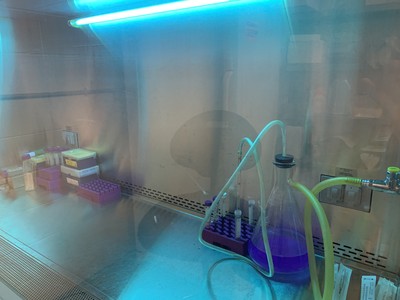TECH

Developed high intensity ultraviolet lamp that could kill coronavirus
Scientists from universities in the US and Japan are collaborating on a project that aims to create an economical, mass-produced device to kill the new coronavirus.
In the future it may be possible not only to disinfect, but to kill coronaviruses and pathogens present on surfaces with the help of high intensity ultraviolet (UV) lights, according to a joint survey conducted by the University of Pennsylvania and University of Minnesota, USA, as well as by Tohoku University and Tokyo University, Japan, and published on Monday (1) in the journal Nature.
American and Japanese scientists say they have developed "high-performance UV-emitting diodes [semiconductors] that would allow them to create personal, portable, durable, energy-efficient and environmentally friendly devices designed to eliminate the new coronavirus.
What wavelengths of ultraviolet light are best for killing coronaviruses and disinfecting surfaces? An interdisciplinary team of researchers from the state of Pennsylvania was awarded seed capital [pre-financing for business projects] to discover this.
According to the statement from the University of Pennsylvania, the researchers concluded that strontium niobate was "the game-changing material". The scientists asked their Japanese colleagues to obtain strontium niobate films and obtained good results from it.
Which wavelengths of UV light are best for killing coronaviruses to disinfect surfaces?
An interdisciplinary team of Penn State researchers has been awarded seed-grant funding to find out. ow.ly/gxQa50zSP13
55 pessoas estão falando sobre isso
The project brought together US$90 Thousand to determine the conditions of intensity of ultraviolet light and time of exposure to the virus, whose tests will be carried out in the Biosafety laboratory of the State Park of Pennsylvania.
Practical application
In addition, the team will apply the results to computer models to adjust their use in different places, preventing pathogens from spreading through the air and inside buildings.
"Although our first motivation in developing transparent UV conductors was to develop an economical solution for water disinfection, we now realize that this innovative discovery offers a potential solution for deactivating COVID-19 in aerosols that can be distributed in air conditioning systems [ ...] of buildings, "explains one of the researchers, Joseph Roth, a PhD student in materials science and engineering at the University of Pennsylvania.
Devices that emit ultraviolet light are already able to do this job, but they are very expensive, require a high emission level (from 200 to 300 nanometers) to kill viruses, use discharge lamps that contain mercury, are bulky, last a short time and require a large amount of energy to function, preventing its massive use against SARS-CoV-2, explains the team.
So, if successful, this method promises an economical and massive means of eliminating viruses and pathogens from surfaces, something particularly important during the current pandemic.
RIA Novosti-Russia



No comments:
Post a Comment